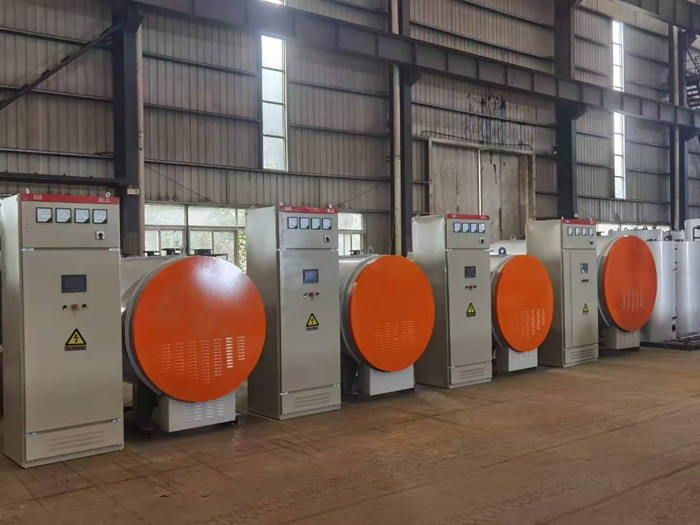Classification of energy-saving boilers
Release time:
2022-09-27
Energy-efficient boilers can be classified by function, fuel, and use; by function, they can be divided into energy-efficient and environmentally friendly boilers and CNC environmentally friendly boilers. By fuel, they can be divided into coal-fired environmentally friendly boilers, gas-fired environmentally friendly boilers, and biomass environmentally friendly boilers. According to their use, they can be divided into breeding environmentally friendly boilers, hot water environmentally friendly boilers, and bathing environmentally friendly boilers.
Energy-saving boilerThey can be classified by function, fuel, and application; by function, they can be divided into energy-saving and environmentally friendly boilers and CNC environmentally friendly boilers. By fuel, they can be divided into coal-fired environmentally friendly boilers, gas-fired environmentally friendly boilers, and biomass environmentally friendly boilers. According to their applications, they can be divided into boilers for livestock farming, hot water boilers, and bathing boilers. Next, I will introduce the classification of energy-saving boilers:

First, classification by function
Energy-saving boiler: The boiler uses coal as the main material, and water and chemical additives as auxiliary materials. After being finely ground and refined by special equipment, it is fully and evenly mixed with water, and under the action of chemical additives, a uniform and stable water-coal slurry is generated. CNC environmentally friendly boilers refer to fully automatic intelligent environmentally friendly boilers with digital control functions.
Second, by fuel
It can be used for the steam required in the processing of industrial products such as textiles, printing and dyeing, papermaking, food, rubber, plastics, chemicals, medicine, steel, and metallurgy. It can also be used for heating, bathing, air conditioning, and domestic hot water in enterprises, hotels, schools, catering, and service industries.Energy-saving boilerGenerally refers to boilers that burn natural gas and liquefied petroleum gas. An environmentally friendly boiler is a type of boiler that uses biomass as fuel, and is called a biomass steam boiler, biomass hot water boiler, biomass hot air boiler, biomass heat transfer oil boiler, vertical biomass boiler, horizontal biomass boiler.
Third, by application
1. Livestock farming environmentally friendly boiler, its main characteristics are:
Safety: Atmospheric pressure design, no annual inspection required, with water shortage, circuit, and pressure alarm protection functions, using high-standard and high-quality matching components to ensure safe and stable operation of the boiler.
Environmental protection: Using clean energy sources such as natural gas, liquefied petroleum gas, biomass pellets, and alcohol fuels, with clean combustion, no sulfur compounds and odor emissions, meeting environmental protection standards.
Energy saving: The boiler adopts a multi-return design with a large heating surface and high heat. Using suspended combustion technology, reasonable flue gas flow, boiler thermal efficiency can reach over 95%, and the exhaust gas temperature is as low as about 45 degrees.
High degree of automation: The boiler adopts a microcomputer control system, automatic ignition, automatic feeding, convenient and clean operation, and no coal feeder is needed.
Multi-functional: The boiler can provide a variety of environmentally friendly fuels such as natural gas, liquefied petroleum gas, biomass pellets, and alcohol fuels. With the increasing environmental protection requirements, the boiler will not be eliminated due to the need to change fuels at any time!
2. Hot water environmentally friendly boiler
This environmentally friendly and energy-saving boiler includes an upper furnace body and a lower furnace body. The upper furnace body consists of a flue and a furnace body; the lower furnace body has a combustion chamber, and above the combustion chamber of the lower furnace body is a hot water pipe; after the upper furnace body and the lower furnace body are connected, the furnace body and the heat transfer pipe are connected into one piece through an outer water pipe. The inlet is set at the top of the upper furnace body, and the outlet is set on the outer wall of the lower furnace body; the flue is divided into longitudinally rotating flues by a furnace body with a cross-section close to the shape of "m"; the upper furnace body can be equipped with an exhaust port; the heat transfer pipe in the lower furnace body can be a serpentine pipe, and the inlet of the upper furnace body and the outlet of the lower furnace body can be connected to the control switch together. Compared with the existing technology, this practical boiler has the advantages of long residence time, sufficient fuel combustion, less smoke and dust emissions to the atmosphere, low heat content, and energy saving. This is an introduction to the classification of energy-saving boilers. If you want to learn more, please Contact Us!
Latest News




